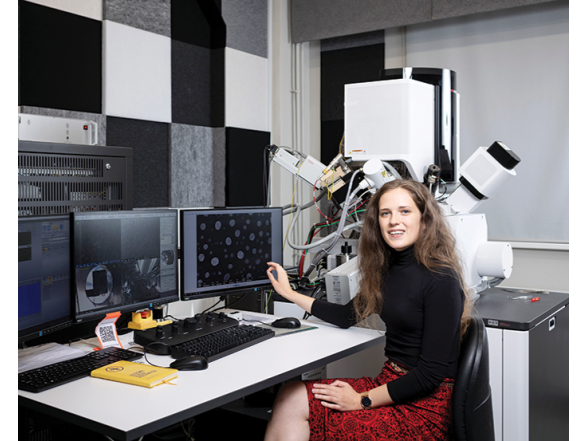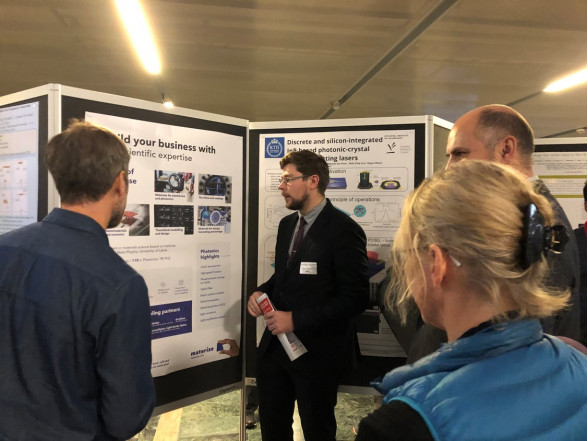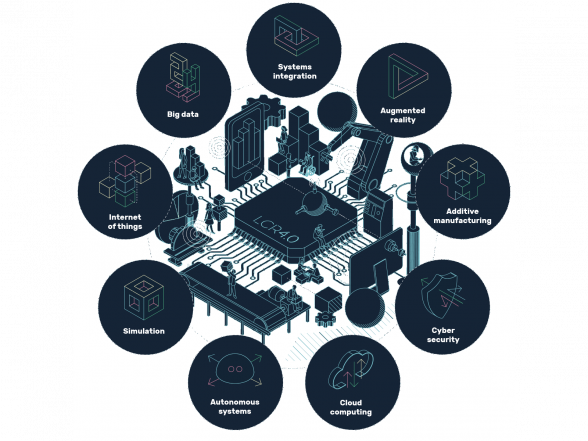Līga Ignatāne, a young research assistant at the ISSP UL Microscopy Laboratory, was recently honored as a laureate of the Baltic Fellowship for Women in Science 2024, a prestigious award from the Latvian Academy of Sciences and the Latvian National Commission for UNESCO. Since the announcement, Līga has participated in several media interviews.
On September 15, she appeared on the Latvian National Radio program "Zināmais nezināmajā" (Known in the Unknown), which explores scientific achievements and the lives of notable scientists. The episode highlighted the three women awarded the Baltic Fellowship earlier that month.
On September 26, the weekly news magazine “Ir” (#39 (751)) published a feature article about Līga, discussing her journey in science, her family, and her passions outside of research.
Standing before a blackboard, marker in hand, Līga is ready to meticulously explain her work to the “Ir” magazine journalist. As she sketches out her ideas, she begins to delve into the fascinating world of Raman spectroscopy—a technique that allows scientists to identify the presence of molecules or bacteria. This method can detect subtle warnings of food spoilage or the onset of illness. Yet, she also acknowledges its limitations; Raman spectroscopy requires a high concentration of a substance to confirm its presence, much like a COVID test that might yield a negative result even when the virus is lurking in the body, waiting for enough antibodies to reveal itself.
Līga’s mission is to enhance the sensitivity of this method. She designs special surfaces that act as amplifiers for Raman spectroscopy, enabling the detection of even the smallest concentrations of substances. These surfaces are crafted from noble metals like gold or silver, functioning much like antennas that catch elusive signals. The surfaces must be meticulously sized between 50 to 300 nanometers, with their efficiency hinging on their placement, size, and shape.
Since 2020, Līga has been immersed in the development of these nanostructured surfaces, conducting experiments to determine the most effective configurations. She explores whether beads or triangular shapes serve as better antennas and how the arrangement of these "antennas"—whether periodic or chaotic—affects their performance. The concept of using silver films to amplify the Raman signal isn’t new; it dates back 60 years. Līga draws a zigzag line on the board, illustrating a rough sheet of silver, and explains how scientists of the past discovered that surface irregularities contribute to signal amplification. Sharp edges and particle sizes play a crucial role in this phenomenon.
Yet, the challenge lies in effectively utilizing nanoparticles. Līga notes that if clouds of nanoparticles were released into the air, they would likely remain suspended indefinitely, never settling. The pressing question is how to ensure these particles adhere to the specially designed surfaces, allowing the antennas to function optimally.
Equipped with a focused ion beam attached to an electron microscope, Līga experiments with various shapes and combinations of surfaces. On the computer screen, a constellation of dots emerges—holes she has meticulously created to trap gold nanoparticles. She aims to design these holes to accommodate 60-nanometer particles, a task she approaches with precision and creativity. She sketches pairs of black dots on a white sheet, resembling dumbbells, and explains how the microscope will bombard the black area to create the necessary holes.
For the antennas to work effectively, the silicon surface, now embedded with holes, must be coated with a layer of gold and subjected to heat to produce the nanoparticles. Analyzing the outcomes of her experiments, Līga seeks the optimal arrangement of these nanostructures. Although the concept of special surfaces as amplifiers is not new, she believes that the field is ripe for innovation. Recent advancements in methods for creating structures with nanoscale precision have opened up new possibilities, allowing scientists to position nanostructures with unprecedented accuracy.
As Līga reflects on the potential applications of her discoveries, she acknowledges their vastness. However, she emphasizes that scientists focus primarily on research, driven by a desire to understand the fundamental principles of their work. Unlike engineers and businesspeople, who often prioritize practical applications, scientists like Līga are motivated by curiosity and the hope that their findings will eventually contribute to the betterment of civilization. In the end, it is the pursuit of knowledge and understanding that fuels her passion for science.



